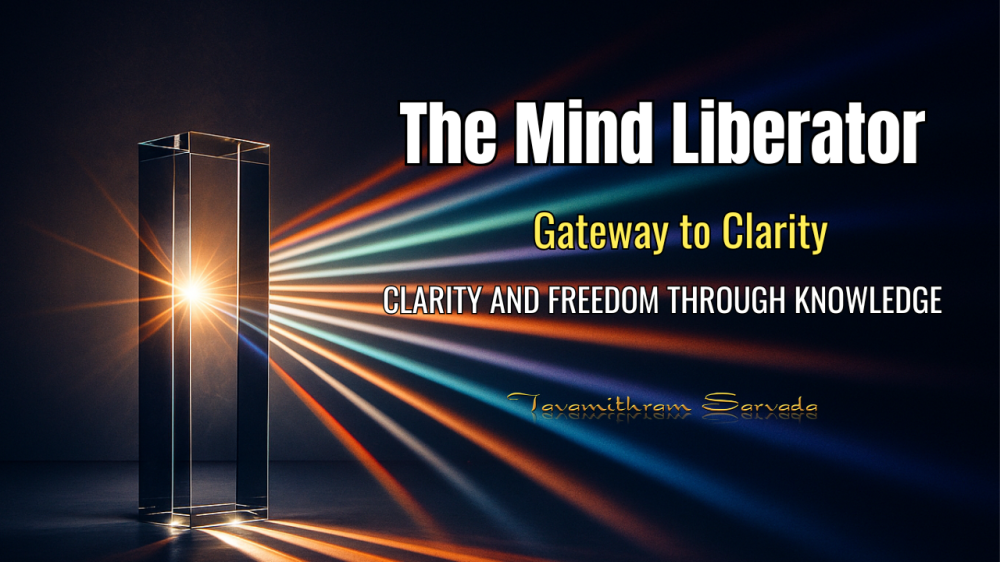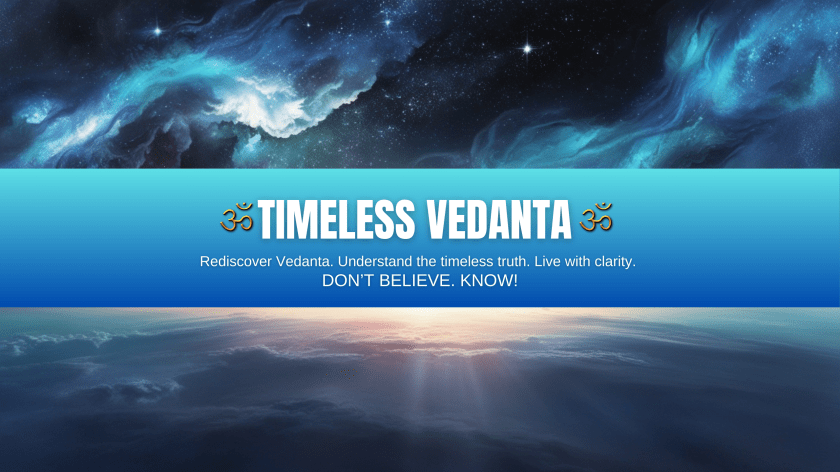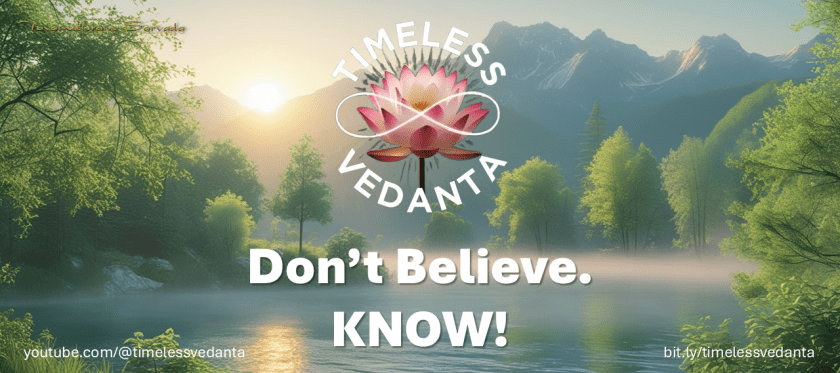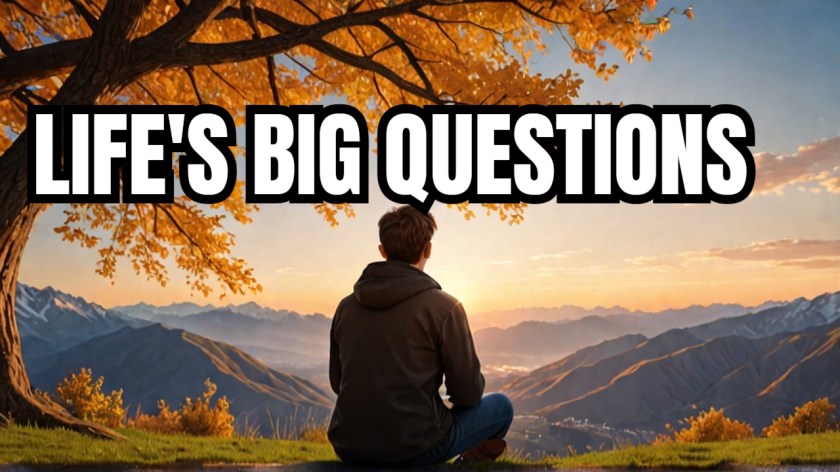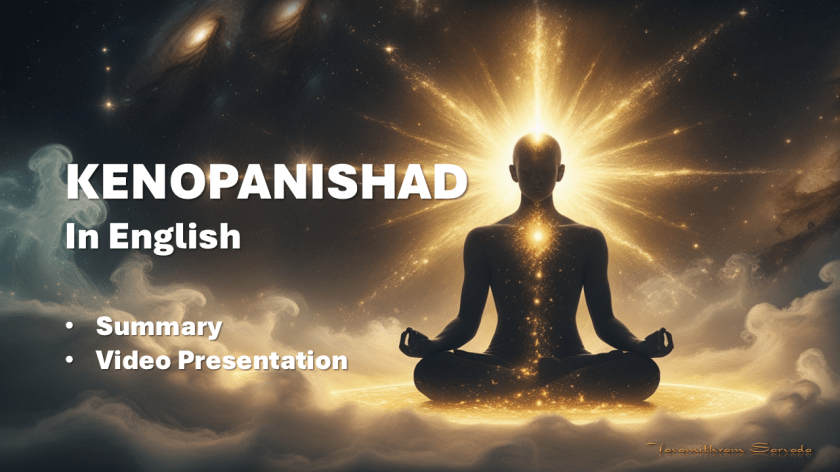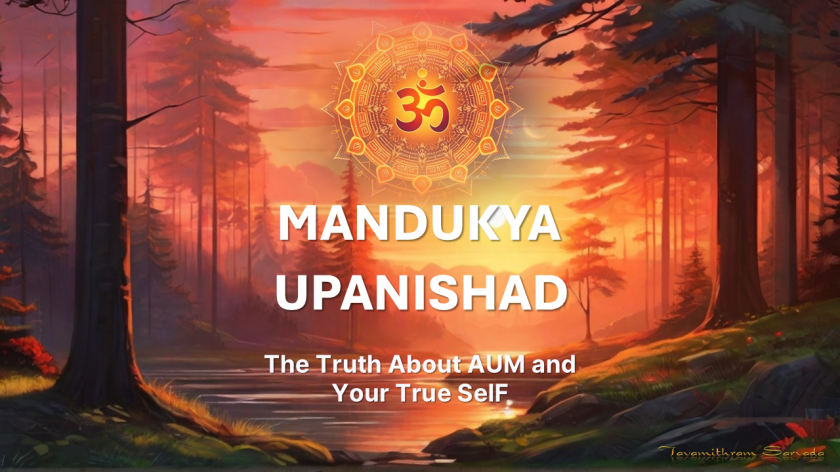Introducing “Timeless Vedanta” – A Channel Dedicated to Non-Dual Wisdom
The Timeless Vedanta Channel on YouTube
Dear Readers,
“It brings me immense joy to announce the launch of my new YouTube channel, Timeless Vedanta – a space dedicated solely to sharing the pure essence of Advaita Vedanta in a clear, rational, and practical manner.
“In today’s world, which is saturated with noise, confusion, and often superficial spirituality, there is a deep hunger among thoughtful seekers – especially young minds – for clarity and truth. Timeless Vedanta is a space to gain such understanding
“This channel is not about religion, dogma, or blind belief. It is about direct exploration, deep inquiry, and the timeless truth of non-duality – the understanding that your innermost Self is not separate from the reality that pervades all existence.
What You Can Expect:
- Thought-provoking explorations of the Srimad Bhagavad Gita, Upanishads, and Brahma Sutras
- Connections between Vedantic thought and Western philosophies, including Spinozism and Stoicism
- Simple, logical explanations of profound topics such as consciousness, existence, and the nature of reality
- A firm rejection of superstition, ritualism, and unnecessary complexity
- Content that encourages critical thinking, self-reflection, and most importantly, direct understanding
Why “Timeless Vedanta”?
Because truth does not age. It is not bound by culture, belief, or time. The teachings of Vedanta, when stripped of layers of tradition and theological interpretation, reveal a science of consciousness that is as relevant today as it was thousands of years ago.
This channel is open to people of all cultural and religious backgrounds who have an open mind and a sincere desire to seek clarity.
This channel is an invitation to rediscover that wisdom, to see clearly, and to live freely.
📌 Subscribe to Timeless Vedanta today
🔔 Turn on notifications so you never miss an update
💬 Join the conversation, share your thoughts, and grow with a community of sincere seekers
